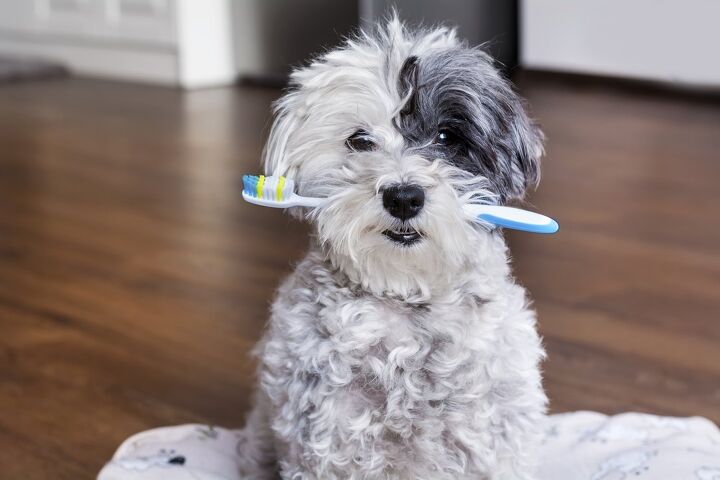All About Cavities in Dogs: Symptoms and Treatment

You brush your teeth twice a day to prevent dental health problems like cavities. Keeping your teeth clean is an essential part of your dental hygiene and it is just as important for your dog. If you don’t brush your dog’s teeth, his risk for developing gum disease could be high and he could also be at risk for other dental problems such as cavities.
If you take a look at your own teeth, you’ll notice that they are shaped differently from your dog’s teeth. Your teeth are wide with a concavity in the top where food can easily become trapped – this is the first step toward a cavity. Your dog’s teeth, on the other hand, are cone-shaped which makes it more difficult for food to get stuck and contribute to the development of cavities. Though cavities in dogs are rare, only affecting about 5% of dogs, it is still a serious problem that you need to be aware of. Dogs of any breed, sex, and age have the potential to develop cavities.
Related: Top 10 Toys for Clean Dog Teeth
Cavities in dogs are also known as caries – this is the term used to describe infected areas of tooth decay that are caused by a loss of calcium in the enamel of a tooth. Bacteria are the primary cause of cavities in dogs. When bacteria start to multiply in the mouth, they produce acids that wear away at the tooth’s enamel and cause the tooth itself to begin rotting. Some of the other causes of cavities in dogs include poor dental hygiene, diet too high in carbs, low overall health, crowded teeth, gaps between the teeth and gums, low saliva pH and worn-away enamel.
The only symptoms of cavities in dogs is the visual appearance of the cavity itself. Cavities are more likely to form if your dog’s teeth are growing too close together or if he has a lot of space between the teeth and the gums at the top of each tooth. Dogs most frequently develop cavities in the maxillary first molar on both the top and bottom jaw, primarily because it has deep groves in the surface as well as pits where the bottom molar meets the adjacent top tooth. The maxillary molars are the least sharp of all your dog’s teeth and the most similar to your own teeth.
Related: Pros and Cons of Pet Dental Care Products
There are two types of cavities in dogs. Incipient cavities appear as a dull spot in the tooth’s enamel which signals that a cavity is about to form. A cavity that has already formed will look like a structural defect on the tooth’s surface along with an area of dark, decayed dentin just under the enamel.
In diagnosing your dog’s cavity, your veterinarian will perform a dental exam and give the cavity a rating from Stage 1 to Stage 5. The treatment of cavities in dogs depends on the stage. If you catch it early enough, your vet can treat the tooth to prevent the cavity from developing. In later stages, your dog may require a more extensive procedure such as a root canal or extraction.
Once you’ve had your dog treated for cavities, it is important to maintain good dental hygiene to prevent the problem from developing again. Brush your dog’s teeth after every meal and keep up with your routine veterinary visits as well.

Kate Barrington is the loving owner of two cats (Bagel and Munchkin) and a noisy herd of guinea pigs. Having grown up with golden retrievers, Kate has a great deal of experience with dogs but labels herself a lover of all pets. Having received a Bachelor's degree in English, Kate has combined her love for pets and her passion for writing to create her own freelance writing business, specializing in the pet niche.
More by Kate Barrington























